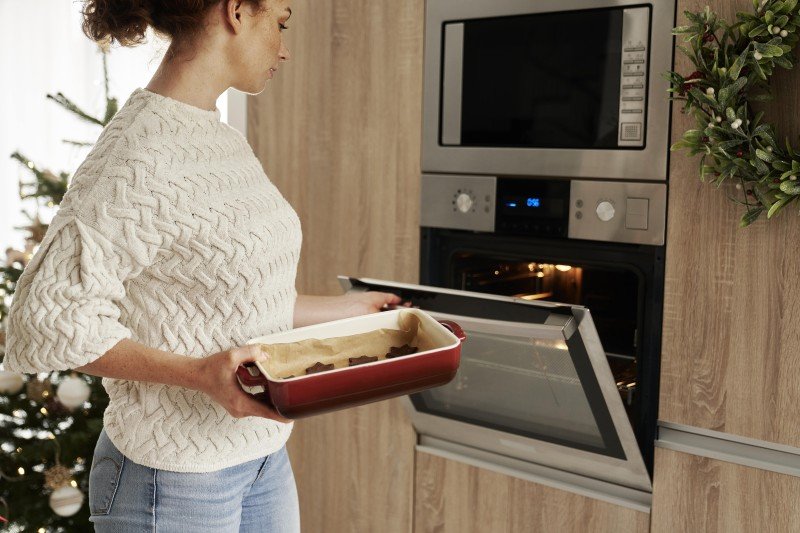15 Top Documentaries About Hob And Oven
Understanding Hobs and Ovens: The Essential Kitchen Appliances
In the world of kitchen appliances, couple of products are as necessary as hobs and ovens. These home appliances form the foundation of cooking activities, making it possible for people to develop everything from simple meals to elaborate feasts. Understanding the distinctions, types, and functionalities of hobs and ovens can substantially improve one's cooking experience. This post explores the complexities of hobs and ovens, offering insights that deal with both newbie and skilled cooks.
What Is a Hob?
A hob, typically referred to as a cooktop or stove top, is the flat surface area on which pots and pans are positioned for cooking. Hobs are equipped with heating elements that generate the needed heat for cooking food. They are available in numerous forms, including gas, electric, induction, and ceramic choices. Each type uses distinct benefits and disadvantages.
Kinds of Hobs
Gas Hobs:
- Heat Source: Natural gas or lp.
- Benefits: Instant heat control and responsiveness, preferred by many chefs for exact cooking.
- Disadvantages: Requires a gas connection and can be less energy-efficient.
Electric Hobs:
- Heat Source: Electric coils or smooth glass-ceramic surface areas.
- Benefits: Generally easier to clean, even heating, and widely offered.
- Disadvantages: Slower to warm up and cool off compared to gas.
Induction Hobs:
- Heat Source: Electromagnetic currents.
- Benefits: Quick heating, energy-efficient, and just heats the pots and pans, not the surrounding surface.
- Disadvantages: Requires suitable pots and pans (ferrous materials).
Ceramic Hobs:
- Heat Source: Electric and has a smooth glass surface.
- Advantages: Sleek look, easy to tidy, and even heating.
- Drawbacks: Can take longer to heat up and cool down.
What Is an Oven?
An oven is an enclosed device that cooks food by surrounding it with dry heat. Ovens can be standalone units or integrated with hobs in a single appliance referred to as a variety. Ovens are flexible tools that can be utilized for baking, roasting, broiling, and more.
Kinds of Ovens
Standard Ovens:
- Heat Source: Electric or gas.
- Advantages: Good for traditional baking and roasting.
- Drawbacks: Can have irregular heat circulation.
Convection Ovens:
- Heat Source: Electric or gas with a fan for distributing air.
- Benefits: More even cooking and faster cooking times due to airflow.
- Downsides: Can be costlier and might require changes in cooking times.
Microwave Ovens:
- Heat Source: Microwaves.
- Benefits: Quick cooking and reheating; excellent for thawing.
- Downsides: Can not brown or crisp food well.
Steam Ovens:
- Heat Source: Steam generation.
- Advantages: Retains nutrients and moisture in food, much healthier cooking choice.
- Drawbacks: Longer cooking times and normally greater expense.
Key Differences Between Hobs and Ovens
While hobs and ovens serve the primary function of cooking food, their functionalities and utilizes differ significantly. The following table summarizes these essential distinctions:
Feature
Hob
Oven
Cooking Method
Direct heat
Enclosed heat
Main Use
Boiling, sautéing, frying
Baking, roasting
Heat Source
Gas, electric, induction
Gas, electric, steam
Cooking Area
Flat surface area
Enclosed area
Cooking Time
Generally quicker
Differs based upon meal
Control & & Precision
Immediate and direct
Relies on settings and timers
Advantages of Using Hobs and Ovens Together
Integrating making use of a hob and an oven can considerably boost the cooking process. Here are some benefits:
- Versatility: Different types of food can be cooked concurrently.
- Effectiveness: Using both permits numerous cooking methods, such as burning on the hob and baking in the oven.
- Time-Saving: Multi-tasking can significantly lower overall cooking time.
Upkeep and Care
To make sure the durability of hobs and ovens, routine maintenance is essential. Here are some suggestions:
For Hobs:
- Clean spills right away to prevent staining.
- Usage suitable cleaners for specific products (e.g., ceramic cleaner for glass-ceramic hobs).
- Frequently check gas connections for leaks (for gas hobs).
For Ovens:
- Wipe down the interior after each use to avoid build-up.
- Usage self-cleaning features if available, or use oven cleaners for difficult spots.
- Regularly check seals and gaskets for wear and tear (to keep heat effectiveness).
Frequently asked questions About Hobs and Ovens
1. What is the very best kind of hob for a newbie cook?
Answer: A ceramic or electric hob is frequently suggested for novices due to alleviate of use and cleansing.
2. Can I utilize any cookware on an induction hob?
Answer: No, induction hobs need pots and pans made from magnetic materials (e.g., cast iron or stainless steel).
3. How typically should I clean my oven?
Response: It is advisable to clean your oven every couple of months, or more often if you utilize it often.
4. Is it much better to bake in a convection oven?
Response: Yes, stoves are typically much better for baking as they provide even heat distribution. Nevertheless, some fragile dishes might benefit from standard ovens.
Comprehending the functionality and distinctions in between hobs and ovens is vital for any cooking enthusiast. Whether one prefers the instantaneous heat of a gas hob or the accuracy of an induction cooktop, each type offers special benefits. Similarly, Buy Electric Oven Online differ commonly in function, from traditional baking to steam cooking. By valuing these home appliances' roles in cooking, cooks can boost their cooking skills and streamline their kitchen activities.
